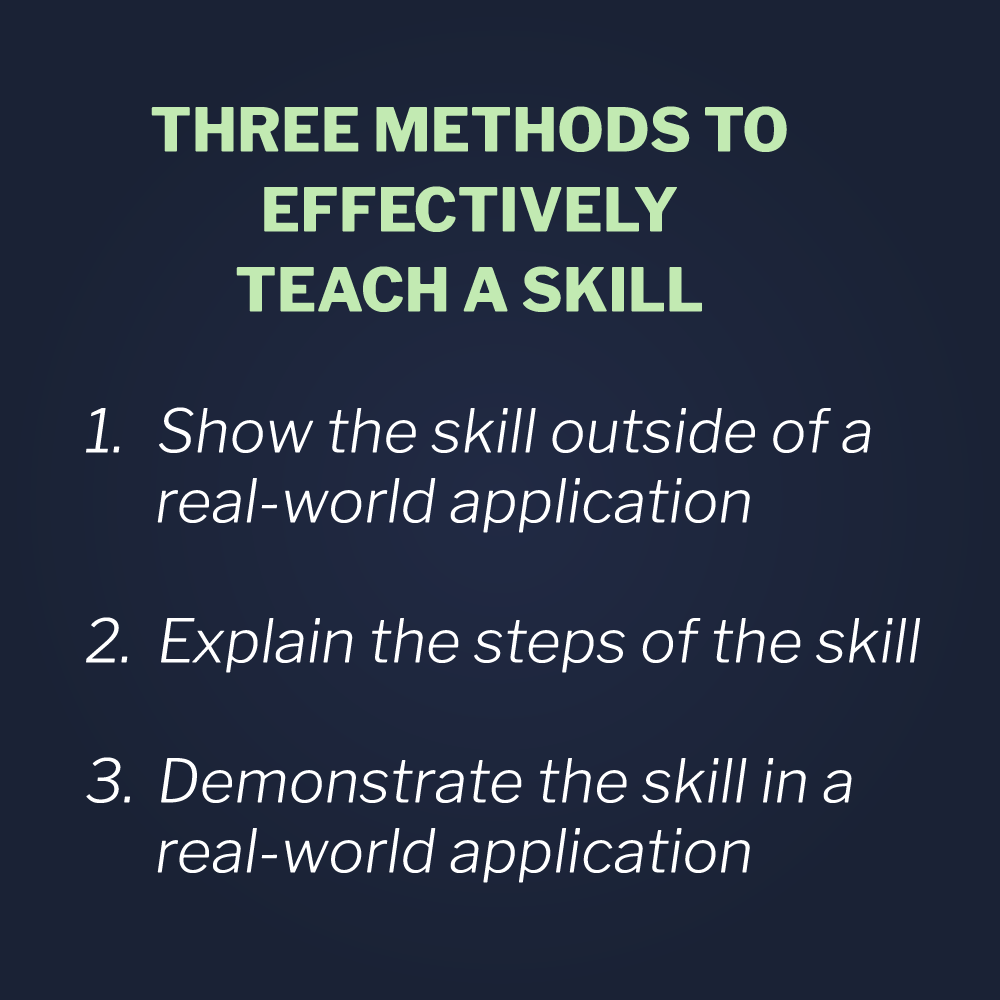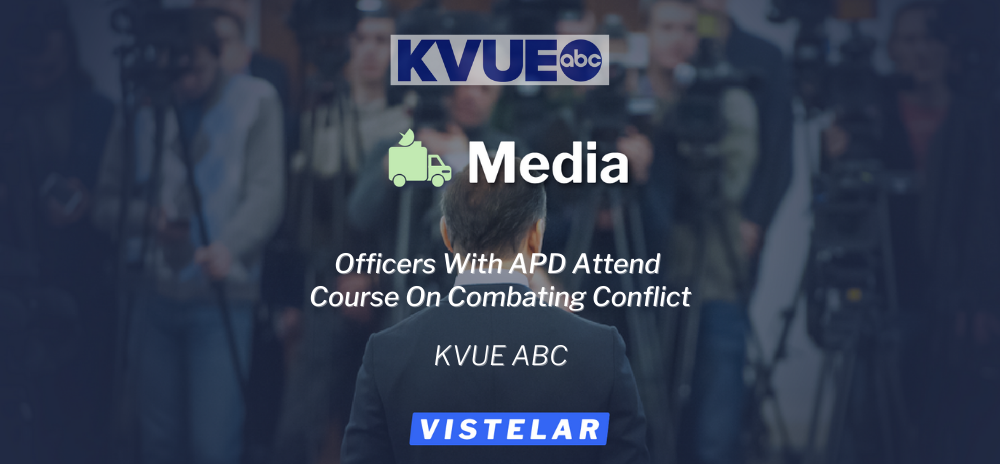This entry is part two in a three part series from our published report How to Best Train Contact Professionals. Check out our blog to catch the rest of the article.
Improving Contact Professional Training
The first step in improving contact professional training is to recognize that it must be different than the training of other employees because contact professionals have such a broad range of job duties, including frequent human interaction and the need to maintain safety.
Therefore, training of contact professionals must:
- Have the primary goal for attendees to develop performance competencies rather than to only meet learning (knowledge-based) objectives.
- Minimize lecture and use a limited number of presentation slides. The slides used should prompt the instructor through the course lesson plan and provide a visual learning aid to students.
- Focus on effectively interacting with others. This means sounding, looking, and responding in ways that provide a positive experience for the person or persons with whom they are interacting. The goal should be to end the interaction in a better place than where it started and establish a positive foundation for any future interactions.
- Emphasize practice that integrates multiple skills, including human relations and personal safety. People learn far more by performing in real-world situations and teaching others than by listening, reading, watching, and doing drills.
Attendees should leave the class ready to hit the ground running. They shouldn’t be expected to take what they learned in class and figure out for themselves how to apply it. Instead, whatever performance competencies can be developed during the available class time, the attendees must possess by the end of class.
The instructor’s goal is not to “cover all of the material.” Rather, it is for the attendees to become competent in a defined set of skills they will need when they return to work. They must be able to correctly perform the skills by themselves without direction or instructor supervision. This takes time.
Therefore, it’s important that instructors don’t try to accomplish more than they have time to accomplish. If less material is covered but attendees leave the class with new performance competencies that they can skillfully implement on the job, the training should be considered a success. Only train what you have time to train.
Training Improvement Specifics
The three primary elements of contact professional training are 1) teaching the skills outlined in the course curriculum, 2) practicing these skills in real-world situations, and 3) evaluating attendees on their performance of these skills.
1) Teaching Knowledge and Skills
Obviously, before attendees can practice skills or be evaluated on performing them, they need to be taught the actual skills themselves and how to perform them. Depending on the specific learning goal, this can be accomplished through a variety of methods:
- Pre-Class Assignments — reading a manual/workbook or taking an online course to obtain some basic knowledge prior to in-class skill development
- Demonstrations — instructor showing the performance of skills
- Memorable Stories – narrative or video of a real-world situation
- Group Discussions — instructor or attendee led
- Group Work — guided discovery, problem analysis, script-writing collaboration, peer teaching, opposing perspective debates (collaboration aids learning)
- Lecture — instructor presentation and explanation of the material
- Classroom Assessments – written or online quiz (writing aids learning)
In teaching knowledge and skills, it’s important to understand that an instructor cannot impose learning. Learning can only result from attendees buying into the meaning, relevance, and practicality of the material being taught.
In other words, the goal should be to leverage the energy and experience of the attendee rather than relying on the energy and knowledge of the instructor. This is accomplished by:
- Ensuring the training is practical, relevant, and useful to the attendee’s job duties
- Establishing a clear vision in the attendee’s mind for the outcome of the training
- Creating an environment where the attendees are treated as peers; they should be accepted and respected as intelligent experienced adults whose opinions are listened to, honored, and appreciated
- Enabling attendees to link their life and job experiences with what is being learned in class
- Engaging attendees in goal-focused discussions stimulated from a variety of means (e.g., demonstrations, defined problems)
- Ensuring that the instructor-told or video stories utilized in class have a specific purpose (e.g., inspire, create a desire to imitate, set up a problem for attendee critique and analysis)
Attendees must be actively involved in their learning rather than passively listening to lectures, which includes sharing their expectations for class. The instructor then must respond to attendee inputs to create an environment that will foster successful outcomes.
When teaching a skill, the instructor should start with creating a clear picture in the attendees’ mind of what they are going to learn, an explanation of the need for the skill (e.g., problem the skill addresses), and the justification for the skill (e.g., company policy, applicable laws) using one or more of the methods listed above (e.g., discussions, group work, lecture).
The instructor must clearly show a correlation between the skill the attendees are learning and what they do in their jobs. Without this happening, it is unlikely they will have the internal motivation to learn anything being taught.
The next step is to teach the skill. This is usually best accomplished by these three methods:
- Show the skill outside of a real-world application
- Explain the steps of the skill
- Demonstrate the skill in a real-world application
During skill teaching, the emphasis should be on ensuring the attendees understand how the correct performance of the skill:
- Looks good (professional) on camera
- Communicates concern
- Keeps everyone as safe as possible
… and the problems that can entail if the skill is done incorrectly.
Beyond the above principles, effective teaching should consider the research of cognitive scientists regarding how adults learn. For example, good classroom teaching should include:
- Retrieval – applying what has been learned in the past to what is being learned right now[ii]
- Elaborative interrogation – asking questions and having attendees think through the answers while referencing life experiences[iii]
- Spaced teaching – instead of covering a topic in just single session, repeatedly teach it in separate blocks of instruction over a period of time[iv]
- Interleaving – instead of teaching one topic for too long, stop short and switch to a different topic — and then return to the initial topic at a later time[v]
In deciding how to best teach a curriculum, remember that every single element of what is done in class must have a single-minded goal – for the attendees to be able to confidently and competently perform the skills taught immediately upon returning to their jobs.
[ii] http://www.learningscientists.org/blog/2016/6/23-1
[iii] http://www.learningscientists.org/blog/2016/7/7-1
[iv] http://www.learningscientists.org/blog/2016/7/21-1
[v] http://www.learningscientists.org/blog/2016/8/11-1?rq=interleaving








